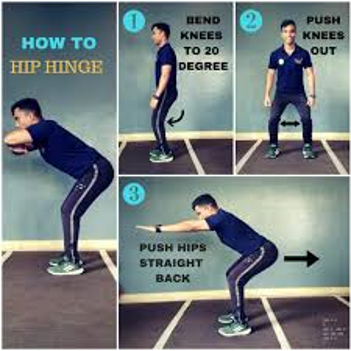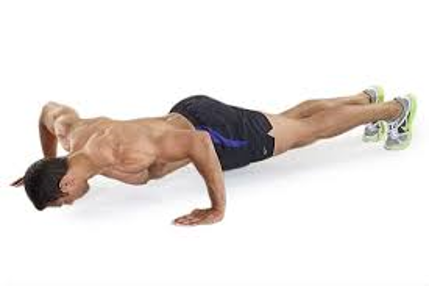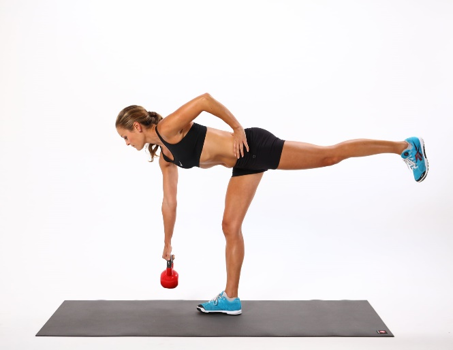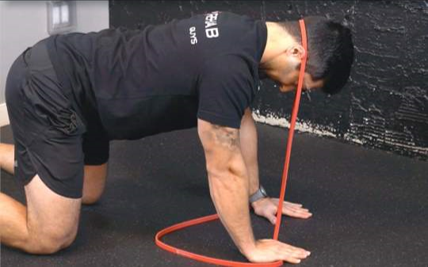As physiotherapists, we try to give exercises to patients that are specific for their injury however there are a few exercises that I find myself using with many patients.
The first three are what we call more functional based movements and the last one is one that we often forget about and is great for strengthening your deep stabilising neck muscles.
1) Hip hinge
This one is great for all patients whatever their injury. As we all sit many times in our day it is important that we know how to squat/hinge properly. It can be modified and progressed easily by doing different loads e.g. TheraBand to barbells, from 2 legs to one, etc.
It involves coordinating the muscles in the whole body to work together to perform the activity which is part of the challenge. It is quite technical to teach but once you get the hang of it it’s such a satisfying exercise to perform. It requires great body awareness from neck to feet and works your trunk, glutes, and hamstrings hard. It has been recommended recently by various papers for lower back pain, if you have been diagnosed with osteoporosis in your spine, and for general optimal movement in daily life.
2) Press up
The classic press-up exercise is definitely a favourite due to its versatility and whole-body involvement. If performed correctly it works your upper limbs, trunk and core muscles. It can be adapted in so many ways which makes it accessible for all age groups and fitness levels. It also targets the rotator cuff and shoulder blade stabilisers which makes it an exercise I use a lot in shoulder rehabilitation.
To make this easier and to help us teach you the right way to do it we often start with a wall press up. This takes gravity out of the exercise and allows you to concentrate on the right muscle coordination patterns. We then increase the difficulty by taking it to the ground on your knees and then on your toes and then a single-arm press up!
As well as adapting the load you can also adapt hand position to bias different muscle groups such as triceps or pectorals which allows people to mix up their workouts.
3) Single leg deadlift
A progression from the hip hinge this exercise is a great one for single leg control work and posterior chain strengthening. It can be used for both ankle and hamstring rehabilitation. I like that it challenges your balance which makes all the receptors work around your hips, knees, and ankle. It also requires good core control to pull it all together.
This exercise is one of the more challenging exercises that I give as it requires good technique and body awareness to perform correctly as it is really easy to cheat! You need to keep your back completely straight and hinge at the hips and extending your leg straight out behind you with rotating your pelvis, all the while trying to keep your balance. Once you get the hang of it you will definitely feel the burn in your trunk, glutes and hamstring muscles.
It can be done with just bodyweight or you can load it up with kettlebells. To make the exercise multiplanar you can reach or place the kettlebell in different positions out in front of you.
4) Quadruped deep neck flexors
This exercise is a go-to for general aches and pains in your neck. I find strengthening exercises, in particular this one, a great reliever of that niggling aching pain particularly if your job is office-based and you tend to sit with your neck sitting forwards throughout the day.
Four-point kneeling or quadruped is a great supportive position to do the exercise in and allows for total control and concentration. The aim is to get wake up your deep neck flexor muscles (stabilisers) by bringing your neck and upper back into a straight position against gravity. It’s actually pretty hard work considering your head weighs about 5kg! You can also make it harder by keeping the tension and rotating your head slowly to the right and left.
This is definitely an exercise that needs to be monitored by someone first to make you are doing it correctly and identify pointers for you to be aware of when you try it at home by yourself.
So give these a try. They do not take very long and you will notice immediate benefits by including them in your daily routine 3-4 times a week.
Emma Newell




